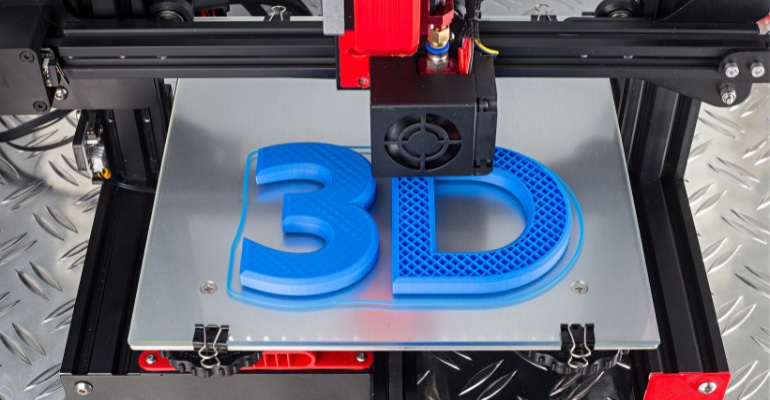How the Curvature of Biomaterials Impacts Tissue Growth
TU Delft engineers show how stimulating curvatures made by a 3D printer are an easy and safe way to promote tissue growth.
May 11, 2023

Using 3D printing, engineers at the Delft University of Technology (TU Delft) in Delft, Netherlands, have shown how the curvature of biomaterials can either inhibit or stimulate bone cells to make new tissue.
The study, published earlier this year in Nature Communications, could be an important step in research into repairing damaged tissues.
"Cells sense and respond to the geometry of the surfaces they are exposed to," said Amir Zadpoor, professor of biomaterials and tissue biomechanics at TU Delft, who supervised the study. "Depending on their curvature, surfaces can either encourage cells to create new tissue or prevent them from doing so. Stimulating curvatures made by a 3D printer are an easy and safe way to promote tissue growth. As compared to drugs, they are also much cheaper."
In petri dishes, the researchers grew bone cells surrounded by small molds made from biomaterials with which the researchers have experience. Depending on the curvatures in the molds, the cells tended to grow, divide, and form tissue to different extents, TU Delft reported.
Cells prefer saddle shapes
Although curved shapes seem to exist in endless variations, they always fall roughly into one of these three categories: a ball that has a convex curvature, a saddle that has a concave curvature, and a plate that is flat. One of the authors, assistant professor of biomaterials Lidy Fratila-Apachitei, said cells prefer a saddle shape.
"If they perceive a saddle shape nearby, growth is stimulated," Fratila-Apachitei said. "The study also shows that cells prefer valleys over hills."
You can't have only saddle curves around cells, the researchers noted. Just as the three angles of a triangle always add up to 180 degrees, the sum of all curvatures must also equal some fundamental numbers.
"You always have a limited budget of saddle shapes," Zadpoor said. "If you use too much negative curvature somewhere, you must use positive curvatures somewhere else to keep the sum constant. You need to use your budget wisely to encourage maximum tissue regeneration."
New tool for organ repair: Video transcripts
Amir Zadpoor: Tissue and organ damage is one of the major causes of disability globally. Regenerative medicine is one of the most promising approaches to solve these problems by regenerating new healthy tissue. However, most of the existing approaches rely only on biology and chemistry. Our study shows that geometry could play a major role in tackling these challenges.
The good thing about geometry is that it's easy, safe, and inexpensive, if you compare it with other options, like growth factors and drugs. You don't have to pay a patent holder to use geometry. You see many types of curvature in nature, architecture, and engineering structures, but it all comes down to one of the three fundamental types of curvature: it's either a plate, or a ball, or a saddle. A plate has two curvatures, both of them are zero, so all in all, zero. A ball has two positive curvatures, which is giving you a positive value for curvature, and a saddle has one positive and one negative curvature, and that would mean a negative total curvature.
Complex geometrical features cannot be easily made using conventional manufacturing techniques. That's where 3D printing saves the day. We have used two-photon polymerization, which is a high accuracy, smaller scale manufacturing technique to create our complex geometrical fields.
Lidy Fratila-Apachitei: By interfacing these very complex curved substrates with bone-like cells we have observed different responses depending on the geometry of the substrate. Specifically, these cells prefer to settle and grow on the concave substrates and on the local concave regions of the convex substrates. These surfaces are characterized by at least one negative principal curvature. This trend was observed for all the different geometries we have designed, and more interestingly, also on two different substrate materials which we have investigated in our study.
A further insight into the organization of cells collectively in the concave regions revealed more interesting findings, namely the formation of suspended cell sheets which are anchored to the bottom of the concave shape by cell bridges, indicating that the cells could actually change completely the original landscape which would be encountered by the newly migrating cells. Last but not least, we have also observed the alignment of actin fibers along the curvature of the substrates and all in all these geometric-guided cellular responses showed us that this cue can be part of the biophysical cues to consider for optimizing 3D portal scaffolds, for example, for bone applications.
Amir Zadpoor: Ultimately, however there is a limitation to the amount of negative curvatures that you could use in any single object. There is a mathematical restriction to the sum of all the positive and negative curvatures in any single object. That would mean that if you use too much negative curvatures somewhere you would have to use positive curvatures elsewhere to keep the sum of all the curvatures constant. So, there is a limited budget of negative curvatures, and you have to use it wisely to design biomaterials that maximize tissue regeneration.
About the Author(s)
You May Also Like



